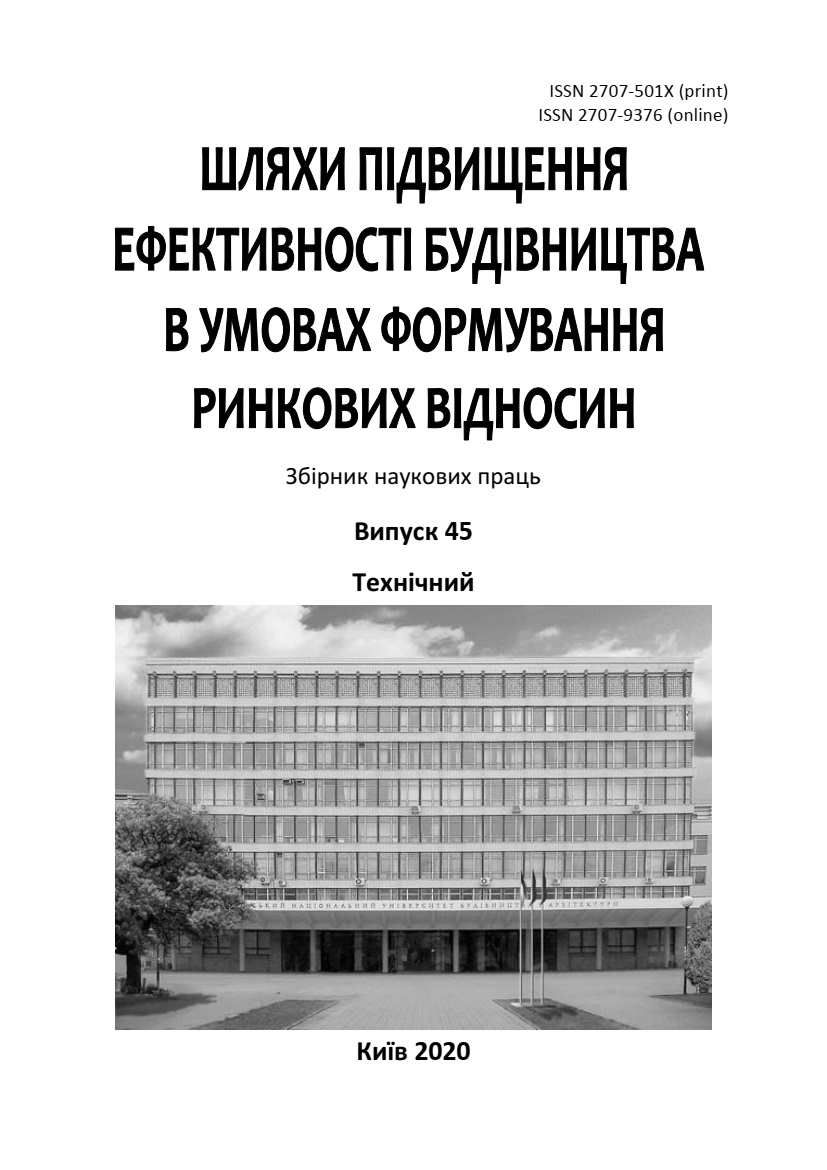Experimental research of thermographic control for detection of cracks in steel structures
DOI:
https://doi.org/10.32347/2707-501x.2020.45.80-90Keywords:
steel structures, crack, thermography, infrared camera, non-destructive testing.Abstract
The paper presents the results of experimental research of the possibility of using thermographic non-destructive testing for the search of cracks in steel structures. The basis of non-destructive thermal control is the registration of changes in the thermal field that occurs in the case of disturbance of the thermodynamic equilibrium of object with an environment that appears on the surface, and parameters of which allows to obtain the necessary information. The thermal control method is based on the interaction of the thermal field of object with thermodynamically sensitive elements (thermocouple, photodetector, liquid crystal element, bolometer) that convert the field parameters (intensity, temperature gradient, contrast, variability) into the electrical signal of the recording device. An experiment is described which proves the possibility of using thermal nondestructive testing for the detection of cracks in steel structures. As measuring instruments for the experiment were used thermal imagers with different resolution of the matrix of the IR image (thermal image), infrared thermohygrometer, luxmeter. The problems encountered during the use of thermal non-destructive testing and possible solutions are indicated. The authors conclude that the thermographic control method can be used in the examination of steel structures for the qualitative assessment of cracks.
References
Thoft-Christensen, P. (2001). Risk Analysis in Civil Engineering. Aalborg: Dept. of Building Technology and Structural Engineering. Structural Reliability Theory, No. 224, Vol. R0163. – p.24.
Eurocode 3: ENV 1993-1-1, Design of Steel Structures, Part 1.1: General rules and rules for the buildings. CEN, Brussels, 2005.
A. Killey, J. P. Sargent, “Analysis of thermal nondestructive testing”, 22(1):216, 2000.
Beate Oswald-Tranta, Paul O'Leary, “Fusion of geometric and thermographic data for automated defect detection”, April 2012, Journal of Electronic Imaging 21(2):1108.
S.E. Burrows, S. Dixon, Simon Gideon Pickering, Teng Li, D.P. Almond, “Thermographic detection of surface breaking defects using a scanning laser source”, November 2011, NDT & E International 44(7):589-596.
Europian Standart EN 16714-1 Non-destructive testing – Thermographic testing – Part 1: General principles.
Котельников В. В. Дисертація на здобуття вченого ступеню кандидата технічних наук «Разработка методики теплового контроля и диагностики технического состояния металлоконструкций мостовых кранов». МГУ ім Н. Є. Баумана. Москва, 2009. С. 35.
M. Belkacemi, C. Stolz, A. Mathieu, G. Lemaître, J. Massich, O. Aubreton, “Nondestructive testing based on scanning-from-heating approach: Application to nonthrough defect detection and fiber orientation assessment”, Journal of Electronic Imaging, 24(6):061112, 2015.
Патент України на корисну модель № 117575 від 26.06.2017.Спосіб безконтактної дефектоскопії металевих конструкцій. Колесніченко С.В., Шарабарін О.Г., Точонов І.В., Ковтун С.В., Мнацаканян К.Б., Путілін С.В., Попаденко А.О.
Патент України № 125968. Спосіб безконтактної дефектоскопії металевих конструкцій. Зареєстровано в Державному реєстрі патентів України на корисні моделі 25.05.2018. // Кравець В.А., Колесніченко С.В., Точонов І.В., Мнацаканян К.Б., Шарабарін О.Г., Гололобов Б.Д., Попаденко А.О.
Downloads
Published
How to Cite
Issue
Section
License
Copyright (c) 2021 S. Kolesnichenko, A. Popadenko

This work is licensed under a Creative Commons Attribution 4.0 International License.
Authors who publish with this journal agree to the following terms:
- Authors retain copyright and grant the journal right of first publication with the work simultaneously licensed under a Creative Commons Attribution License that allows others to share the work with an acknowledgement of the work's authorship and initial publication in this journal.
- Authors are able to enter into separate, additional contractual arrangements for the non-exclusive distribution of the journal's published version of the work (e.g., post it to an institutional repository or publish it in a book), with an acknowledgement of its initial publication in this journal.
- Authors are permitted and encouraged to post their work online (e.g., in institutional repositories or on their website) prior to and during the submission process, as it can lead to productive exchanges, as well as earlier and greater citation of published work (See The Effect of Open Access).

